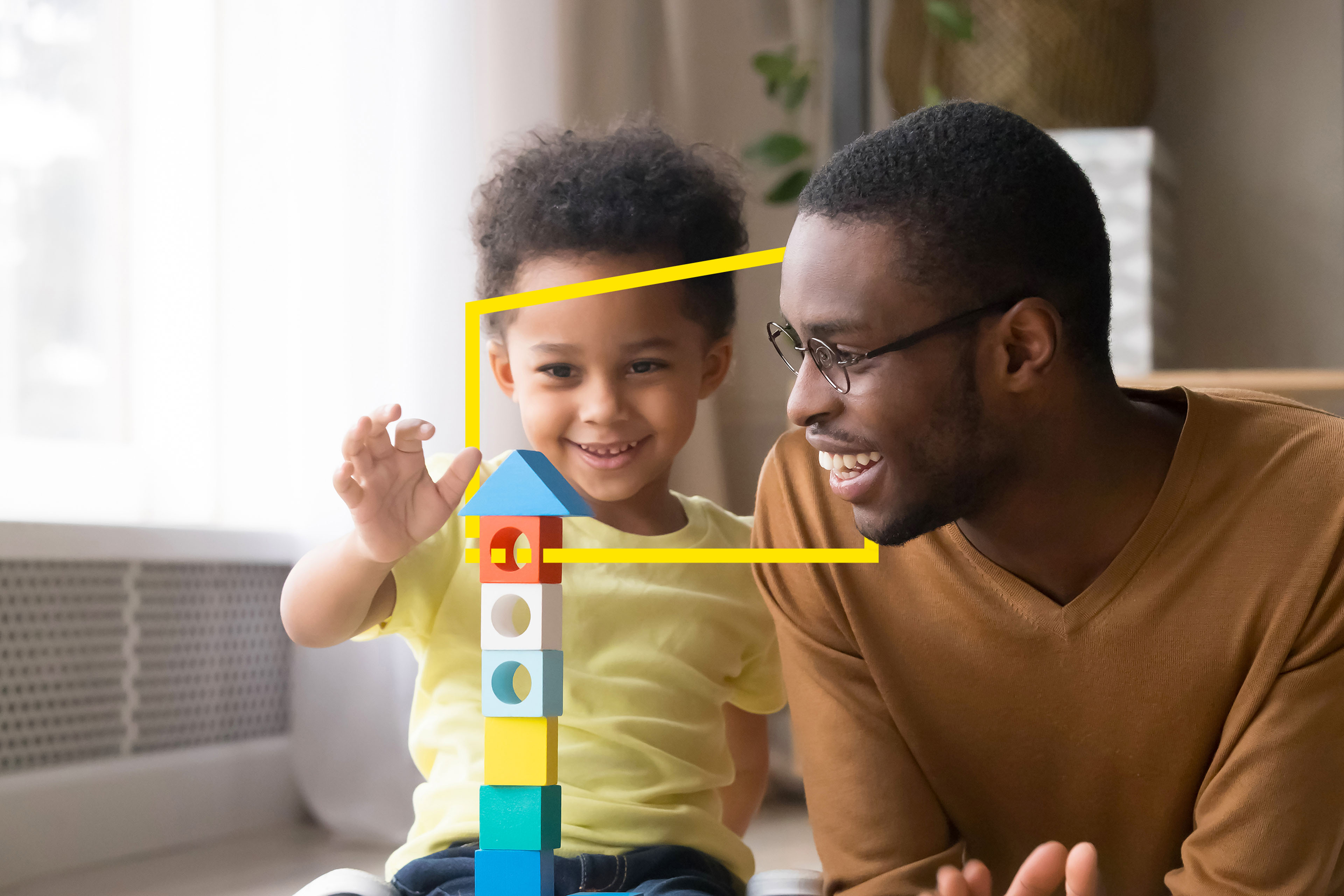EY se refiere a la organización global, y puede referirse a una o más, de las firmas miembro de Ernst & Young Global Limited, cada una de las cuales es una entidad legal independiente. Ernst & Young Global Limited, una compañía británica limitada por garantía, no brinda servicios a los clientes.

Hiperconectado, inteligente y centrado en el ser humano, un hospital inteligente está preparado para el futuro durante décadas.
Tres preguntas para hacer
- Dada nuestra etapa actual en el camino de la madurez tecnológica, ¿qué oportunidades existen de personalizar, simplificar, automatizar y racionalizar los servicios para crear valor ahora, así como en el futuro?
- ¿Cómo podemos embarcarnos en una experiencia de diseño inclusiva con pacientes, cuidadores, empleados y socios comunitarios para crear el mejor camino hacia el éxito?
- ¿Cómo trabajamos hacia nuestra visión de un hospital inteligente, atendiendo al mismo tiempo a los negocios de hoy?
Los hospitales inteligentes combinan un diseño hospitalario de vanguardia con la última tecnología de atención virtual, apoyo a la toma de decisiones impulsado por la IA, sensores IoT conectados y robótica, todo ello interconectado por plataformas digitales para rediseñar fundamentalmente la forma en que se presta la atención en un ecosistema sanitario. Esto redefine la forma en que los pacientes consumen la atención sanitaria, desde sus teléfonos inteligentes hasta un hospital inteligente, y más allá.
En un hospital inteligente, las personas, el entorno y los sistemas están conectados en tiempo real. Las ingentes cantidades de datos generadas a través de esta interconectividad se utilizan de forma inteligente para mejorar la calidad de los procesos básicos de atención al paciente personalizada y segura y de las operaciones eficientes de alto rendimiento1. Los hospitales tradicionales que completan con éxito la transformación para convertirse en un hospital inteligente pueden mejorar radicalmente la experiencia del paciente, personalizar el tratamiento médico, utilizar mejor los escasos y costosos recursos y minimizar enormemente los errores2.
Un futuro con prioridad digital
Aprovechar todo el potencial de las tecnologías fundacionales que definen la industria sanitaria del futuro, a saber, la IA, la robótica, la automatización inteligente, las telecomunicaciones de nueva generación y la edge computing, significa reimaginar las conexiones entre las personas, los procesos y el entorno. Aprovechar estas nuevas tecnologías no solo mejora los resultados de la prestación de cuidados y la eficiencia dentro de los hospitales, sino que también hace posible un papel diferente para los hospitales en el ecosistema más amplio.
La visión de un hospital inteligente es amplia. Para algunos, significa invertir en tecnologías que ofrezcan un conjunto más específico de servicios especializados de alto valor dentro de una red más amplia de socios. Para otros, las vías se extienden más allá de los límites tradicionales del hospital, hasta la comunidad y el hogar. Al convertirse en el ancla o centro neurálgico de sus comunidades, los hospitales pueden desempeñar un papel fundamental en la vinculación y el fortalecimiento del sistema sanitario a medida que avanza hacia una asistencia en cualquier lugar y en cualquier momento. Pueden intervenir como miembros de un ecosistema más amplio interconectado para ayudar a impulsar los objetivos sanitarios en torno a la prevención, la salud de la población y los resultados en materia de calidad de vida3.
Un elemento central del concepto de sanidad inteligente es el uso de tecnologías avanzadas para optimizar y automatizar los procesos con el fin de mejorar los procedimientos existentes y respaldar modelos nuevos y alternativos de tratamiento y atención4, 5. La experiencia del consumidor se basa en gran medida en los datos, lo que da lugar a una atención específica, personalizada e integrada. A nivel empresarial, la eficiencia operativa se consigue mediante la optimización de los procesos y la automatización de las tareas rutinarias6. Entre ellas se incluyen las actividades de front-office, mid-office y back-office, como los modelos de atención virtual, las experiencias de usuario digital-first, la cadena de suministros automatizada y la gestión digital de inventarios, así como la planificación de recursos empresariales.
Embarcarse en el viaje hacia la inteligencia
Emprender el viaje para convertirse en un hospital inteligente comienza con la exploración del arte de lo posible: ¿qué tipo de experiencia quiere proporcionar el hospital o el sistema sanitario a los pacientes y empleados y de qué manera podría transformarse el recorrido de la asistencia?
Las vías para convertirse en un servicio inteligente son variadas. Para los desarrollos hospitalarios en terrenos no urbanizados o de nueva construcción, existen oportunidades para adoptar un nuevo enfoque de diseño, orientado al futuro y ágil, que garantice su pertinencia durante los próximos 20 años y más allá. En el caso de los hospitales existentes, será más probable una transición gradual a las nuevas tecnologías, el rediseño de los modelos de atención, las asociaciones con terceros (incluidos los proveedores, las organizaciones comunitarias y las empresas tecnológicas) y la automatización de muchas actividades y procesos operativos. Independientemente del camino que se siga, cambiar con confianza hacia un hospital inteligente e hiperconectado significa tomar decisiones sobre qué hacer crecer o transformar en el negocio existente, escalar las acciones y las inversiones al ritmo adecuado e impulsar el cambio cultural en toda la organización.
Diseño meditado y centrado en el paciente
La hoja de ruta para llegar a ser inteligentes comienza con una mezcla interdisciplinar de talentos en medicina, ciencias sociales, diseño, tecnología y estrategia para diseñar y construir en torno a los viajes de los pacientes y la experiencia de los trabajadores.
En un sistema sanitario inteligente, la experiencia del paciente es el punto de partida incluso antes de que éste entre en el espacio físico o en la sala de espera virtual. La intención del diseño es simplificar, automatizar y personalizar los procesos rutinarios para mejorar el compromiso del paciente y ofrecer una mejor experiencia asistencial. Guiar a los visitantes hasta los aparcamientos disponibles, lograr el desplazamiento eficaz de los pacientes por un hospital mediante la orientación digital y que las personas tengan la oportunidad de personalizar su entorno y los entornos de atención, incluido el ambiente de las habitaciones y la selección de menús, todo ello redunda en una mejor experiencia del paciente y del cuidador y en un entorno de curación positivo. Desde el punto de vista de la empresa, se reducen las posibilidades de error, se agilizan los flujos de trabajo y los procesos administrativos, y los médicos pueden dedicar más tiempo a atender a los pacientes, lejos de sus computadoras.
El enfoque del diseño no termina en las paredes del hospital o en la interfaz de usuario de la atención virtual. Además, se requiere un diseño ágil de edificios inteligentes y servicios virtuales, incluidas instalaciones modulares, hardware, software y redes, para satisfacer la demanda futura a medida que entran en juego nuevas tecnologías, nuevos modelos de atención innovadores y diferentes formas de trabajar.
Los sistemas de salud inteligentes comparten cinco principios fundamentales de diseño:
- Hiperconectados: entornos físicos y virtuales y una arquitectura de la información sanitaria basada en la liquidez de los datos dentro de los sistemas y entre ellos; esto incluye la conexión con otros entornos y organizaciones asistenciales, como la atención primaria, los especialistas y los trabajadores de atención comunitaria.
- Inteligentes: a través de plataformas y datos conectados, con acceso a perspectivas que respaldan decisiones rápidas y precisas en tiempo real, tanto clínicas como operativas.
- Centrados en el ser humano: centrados en el paciente, la familia y el empleado, donde el diseño de servicios centrados en el ser humano sitúa a las personas en el centro de la resolución de problemas mediante el desarrollo de una profunda apreciación de sus necesidades, motivaciones y retos 7.
- Alta fiabilidad: combinan el diseño de procesos de alta fiabilidad con la automatización inteligente, los sensores y el análisis predictivo, para prevenir, predecir y minimizar el riesgo de daños, errores médicos y cuidados por debajo de los estándares8.
- Sostenibles: modelos de atención que son sostenibles desde el punto de vista clínico, financiero, económico y medioambiental para los hospitales, su personal, los pacientes y las comunidades.
Activos clave de los hospitales inteligentes
Le espera un futuro más inteligente en el que las tecnologías clínicas avanzadas se integren con las infraestructuras construidas y las tecnologías sostenibles. La transición hacia un hospital inteligente e hiperconectado incorporará lo siguiente:
1. Centrado en el paciente para mejorar su experiencia
Los pacientes están en el centro del diseño de un servicio hospitalario inteligente. En un ecosistema sanitario amplio e hiperconectado, médicos, proveedores, técnicos de datos, empresas farmacéuticas, sistemas biométricos, profesionales de la tecnología médica y otros trabajan juntos, aprovechando la IA y otras tecnologías avanzadas para ofrecer una atención personalizada a cada individuo.
2. Tecnologías que permitan una atención rápida, flexible y fiable
Los hospitales inteligentes aprovechan las tecnologías no sólo para mejorar la prestación de asistencia dentro del propio hospital, sino también para conectar el hospital con un ecosistema de prestación de asistencia sanitaria más amplio e impulsar la centralidad del paciente en todos los entornos asistenciales. Los algoritmos integrados en las vías asistenciales y las operaciones automatizan los procesos, optimizan los recursos, predicen las afecciones y respaldan las decisiones clínicas para ofrecer la mejor atención individualizada a cada persona. En Canadá, por ejemplo, el Hospital Humber River está ampliando su transformación digital hacia un enfoque de coordinación de la atención de todo el sistema, coordinando entre el hospital y los proveedores de atención de la comunidad con centros de mando hub and spoke9.
- IA y automatización inteligente: unos procesos frontales (por ejemplo, aplicaciones orientadas al paciente), intermedios (diagnósticos en tiempo real) y administrativos (logística y cadena de suministro) más inteligentes impulsarán mejores experiencias de los pacientes, aumentos de la productividad y mejores resultados.
- Atención virtual: la consulta interactiva será posible entre el paciente y el médico o entre médicos a través de una serie de capacidades (voz, vídeo o ambos) y modalidades (síncrona o asíncrona) a lo largo de la atención continuada.
- IoT y sensores inteligentes: permitirán la conectividad entre los distintos departamentos de un hospital, así como con el ecosistema sanitario ampliado. Los wearables y los sensores recogen y transmiten datos en tiempo real sobre los pacientes a una plataforma central de organización.
- Robots, drones e impresión 3D: estos apoyan procedimientos médicos nuevos y de gran precisión, optimizan la utilización y el despliegue de la mano de obra humana y mejoran la velocidad y la disponibilidad de la atención y en toda la cadena de suministro.
- Realidad digital (realidad aumentada/realidad virtual): el aprendizaje experiencial inmersivo y la formación del personal, la creación de un mundo virtual para procedimientos complejos y la curación eficaz de los pacientes serán posibles.
3. Plataformas interconectadas para la toma de decisiones en tiempo real
Utilizando datos en tiempo real, los pacientes pueden ser tratados en el lugar y el momento adecuados. Esto también permite una toma de decisiones rápida y basada en pruebas. Con especificaciones técnicas y semánticas compartidas y normas para el intercambio de datos e información, las plataformas agregan datos de múltiples fuentes (incluidos los socios del ecosistema) y los integran con las HCE y otros sistemas informáticos, lo que hace que los datos sean valiosos10. En la actualidad, sólo el 20 % de la información relevante para la salud está disponible en el sistema sanitario11. Integrar la información del sistema sanitario con nuevas fuentes de datos (sociales, conductuales, financieros y medioambientales) es cada vez más importante en la búsqueda de una atención proactiva y participativa.
4. Asociaciones con actores del ecosistema
Los sistemas sanitarios inteligentes buscan proactivamente nuevas formas de asociación (especialmente con empresas tecnológicas) que combinen su experiencia en atención sanitaria con conocimientos de alta tecnología, tecnologías conectadas y profundos conocimientos de los consumidores. Al hacerlo, aprovechan las tecnologías para tomar la iniciativa en el desarrollo de innovaciones y la realización de transformaciones esenciales para prosperar en el nuevo entorno de asociaciones, alianzas, nuevas ubicaciones y orientación al consumidor.
5. Infraestructura inteligente
- Entorno curativo: un entorno construido está diseñado para ayudar a los pacientes a recuperarse más rápidamente, tanto física como mentalmente12. En concreto, esto se refiere a la arquitectura de los espacios físicos y digitales como entornos de apoyo para la mejora de la salud, el apoyo a la productividad y la eficiencia de la mano de obra y la reducción del estrés laboral, así como la minimización de los residuos.
- Gemelo digital: un gemelo digital se refiere a la réplica digital de los activos físicos, las personas y los sistemas de un hospital. Una tecnología de convergencia que tiende un puente entre lo real y lo virtual, un gemelo digital se utiliza para supervisar, ajustar y optimizar las funciones de los entornos físicos, como el mantenimiento preventivo o la predicción de la gestión de la demanda. Las aplicaciones clínicas incluyen la monitorización del estado de salud y la retroalimentación continua para mejorar el bienestar y los empujones conductuales y el apoyo a la adherencia a los programas de tratamiento13.
- Centros de mando: los centros de mando impulsados por IA, a menudo comparados con un centro de control del tráfico aéreo, analizan los datos clínicos y de localización para supervisar la oferta y la demanda en toda la red en tiempo real. La monitorización en tiempo real de los pacientes permite al hospital identificar a los pacientes con un estado de salud deteriorado, sincronizar la prestación de cuidados, reducir los errores y predecir los puntos de presión y los cuellos de botella en el flujo de pacientes14.
- Entorno de datos: para que las plataformas funcionen con eficacia, los sistemas sanitarios inteligentes crean un entorno de plataforma abierta para conectar y compartir datos, a escala, dentro de las empresas y los sistemas y entre ellos. La plataforma óptima separará el contenido y la tecnología y será independiente del proveedor, distribuida y modular, incorporando tanto sistemas de terceros como heredados. El informe de EY "¿Cómo diseñará la arquitectura de la información para desbloquear el poder de los datos?" trata en detalle la arquitectura para el entorno de datos adecuado para el mañana.
- El hospital en casa: la infraestructura y los equipos portátiles y de fácil manejo amplían el entorno hospitalario al domicilio del paciente, para evitar su hospitalización o reducir la duración de su estancia15, 16 .
Un hospital inteligente es una transformación, no sólo un proyecto tecnológico
Aunque la tecnología avanzada es el facilitador clave, desarrollar un hospital inteligente no es un proyecto tecnológico. Embarcarse en un viaje inteligente hacia la salud requiere una consideración reflexiva de los desafíos conocidos, la sólida gestión del cambio y el liderazgo ejecutivo. Implica la participación de todos los stakeholders – dirección, médicos, enfermeras, personal y socios del ecosistema.
El viaje de transformación hacia el hospital inteligente del futuro debe producirse al ritmo adecuado para la organización y ofrecer la combinación correcta de elementos deseados y necesarios. Para optimizar los activos existentes (ya sea por modificación o ampliación); para introducir recursos que complementen el núcleo existente; o para crear un nuevo ecosistema desde la base
El camino a seguir vendrá determinado por las respuestas a las preguntas clave planteadas anteriormente en este artículo: que la clave para convertirse en un hospital y un sistema sanitario inteligentes e interconectados a prueba de futuro reside en la visión de la experiencia que se ofrecerá a pacientes y empleados y en las formas en que se transformará el recorrido de la asistencia.
Colaboradores: Erik Vermeulen, EY Global Smart Hospital Solution Leader; Kelly Hawk, Senior Manager, Global Health Consulting, Ernst & Young LLP; Ankur Sadhwani, EY Global Health Analyst
Resumen
Los hospitales inteligentes están hiperconectados, son inteligentes, centrados en el ser humano, altamente confiables y sostenibles. Aunque la tecnología avanzada es el facilitador clave, desarrollar un hospital inteligente no es un proyecto tecnológico. Embarcarse en un viaje inteligente hacia la salud requiere una consideración reflexiva de los desafíos conocidos, la sólida gestión del cambio y el liderazgo ejecutivo. Implica la participación de todos los stakeholders – dirección, médicos, enfermeras, personal y socios del ecosistema.
Artículos relacionados
Cinco tendencias que dan forma al futuro basado en datos de la atención médica
La atención médica puede volverse más resiliente, ágil e innovadora al cambiar a modelos comerciales habilitados digitalmente con datos en el centro.<br>
¿Cómo diseñará la arquitectura de la información para desbloquear el poder de los datos?
A medida que las tecnologías emergentes transforman la salud y el cuidado, exploramos cómo crear el entorno de datos adecuado para un ecosistema de salud conectado.





